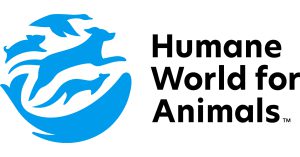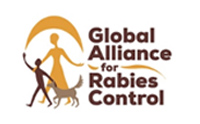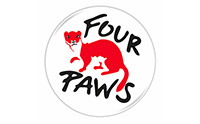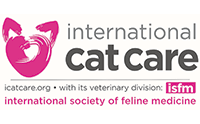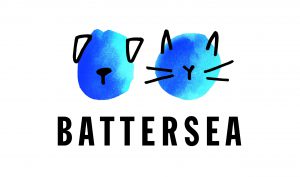An economic analysis of dog population management (DPM) is a rare and valuable commentary. So when ICAM read Andrew Larkin’s peer-review publication reporting a net benefit of many millions USD resulting from Help In Suffering’s DPM work in Jaipur, we felt excited to share these findings with the wider DPM field.
Watch ICAM’s interview with lead author Andrew Larkins, Jack Reece (co-author and HIS) and Sanjay Singh (HIS):
Help In Suffering have been running an ABC project (Animal Birth Control of free-roaming dogs, also known as Catch, Neuter, Vaccinate and Release) in Jaipur, India since 1994. This has involved sterilisation and vaccination of an average 3,000 dogs per year and just vaccination of a further 5,000 dogs per year. This has reduced the roaming dog population by around a half and reduced the percentage of puppies from 19% to just 2% of the population. However, Andrew’s focus was on the impact of this work on human dog bites and human rabies deaths, because this is where much of the financial benefits could be calculated.
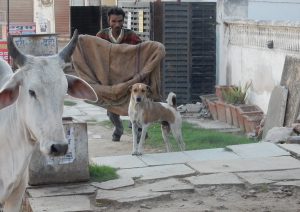
The economic assessment looked at the 23 year period 1994-2017. The approach was to look at the prevalence of dog bites and human deaths rabies in Jaipur in 1994 and estimate how many would have occurred over the coming 23 years if there had been no intervention. This is called the ‘counterfactual scenario’. Then look at the evidence of what actually happened with dog bites and human rabies in Jaipur over those 23 years, under the influence of Help In Suffering’s ABC work.
In 2013, Help In Suffering’s long-term veterinary surgeon and ABC expert, Jack Reece and his veterinary surgeon colleague Sunil Chawla, had published on the significant reduction in reported dog bites following ABC. Comparing this to the predicted dog bites under the counterfactual scenario, Andrew could calculate that ABC had averted over 360,000 dog bites at a cost of 5.62 million USD, an impressive saving for local health service budgets and improvements in community safety.
But the benefits don’t stop there. Andrew also looked at Jack and Sunil’s earlier 2006 publication on the reduction in human rabies deaths following the implementation of ABC. Again, comparing the predicted deaths under the counterfactual scenario, Andrew was able to estimate that nearly 500 human rabies deaths had been averted by ABC over the 23 year period. He was also able to use what are called DALYs (Disability Adjusted Life Years) and India’s GDP to estimate the economic benefit of those lives save from rabies. When added to the 5.62 million USD saved from bites averted, this becomes a total societal economic benefit, estimated to be 38.48 million USD.
These sizeable financial benefits can then be compared to the 658,744 USD cost of Help In Suffering’s ABC work over 23 years (value adjusted for inflation). ‘Benefit-cost ratios’ are the formal way to make this comparison and show that for every $1.00 spent on ABC, $8.50 was saved in dog bite treatment and $58.40 in total societal economic losses from both rabies and bites.
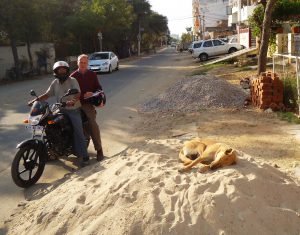 This analysis has shown a clear and sizable economic benefit for the local health service and economic productivity resulting from Help In Suffering’s ABC work. But what factors in Jaipur led to this result? For one, Help In Suffering’s ABC activities are run very efficiently at an average cost of just $10.78 USD per dog sterilised and vaccinated and only $1.86 for solely vaccinating a dog. Jaipur was also suffering from a high burden of rabies when ABC was launched, so there was plenty of ground to be made up in bites averted and lives saved from rabies. It is also important to highlight that Help In Suffering have persisted in diligently and professionally monitoring their intervention effort and impact since ABC was started; this dataset was crucial for the analysis and Help In Suffering should be celebrated for their outstanding monitoring efforts.
This analysis has shown a clear and sizable economic benefit for the local health service and economic productivity resulting from Help In Suffering’s ABC work. But what factors in Jaipur led to this result? For one, Help In Suffering’s ABC activities are run very efficiently at an average cost of just $10.78 USD per dog sterilised and vaccinated and only $1.86 for solely vaccinating a dog. Jaipur was also suffering from a high burden of rabies when ABC was launched, so there was plenty of ground to be made up in bites averted and lives saved from rabies. It is also important to highlight that Help In Suffering have persisted in diligently and professionally monitoring their intervention effort and impact since ABC was started; this dataset was crucial for the analysis and Help In Suffering should be celebrated for their outstanding monitoring efforts.
Importantly, this analysis focused on rabies control benefits and the costs of vaccination only activities were less than 1/5 of sterilisation plus vaccination. Sterilisation would have contributed to rabies control, through mechanisms such as reducing contact rates during breeding seasons, but most of the reduction in human rabies deaths can be attributed to vaccination. So this economic analysis could have been even more positive following a vaccination only intervention with lower costs. However, the reduction in dog bites may well have been far less significant following vaccination only. We know that only a small proportion of the bites treated for rabies exposure actually involve a bite from a rabid dog, treatment is rightly given with an abundance of caution; rabies is not a disease to be taken lightly. So this reduction is not driven solely by a reduction in biting rabid dogs, this appears more closely linked to the reduction in dog population size, and avoiding maternal defensive aggression, both requiring sterilisation and not vaccination alone. Help In Suffering used the ABC approach including sterilisation and vaccination because this is what is legally mandated in the Indian legislation, but they were also wisely flexible in their addition of vaccination only activities to boost herd immunity in the roaming dog population.
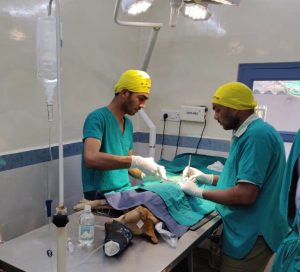
Within India, these findings will be valuable support for those organisations and municipalities implementing, or lobbying for, ABC. But what about outside India? Where a reduction in human rabies deaths is the leading priority, mass dog vaccination will still be the most cost-effective solution, as Andrew states in the conclusion. But where dog bites matter, and those bites are at least sometimes by roaming dogs, this economic analysis provides support for the important and cost-effective role sterilisation can play in bringing down costs to the health service.
We must also see the rarity of such an important economic analysis as a rallying cry to our DPM field. As Andrew points out in his discussion, this analysis did not try to capture the economic benefits relating to other potential impacts of ABC, including a “smaller, healthier dog population with improved welfare…and an enhanced human-dog relationship”. Further, recognising that 75% of puppies born on the streets of Jaipur will die in their first year (Reece at al 2008), the reduction in breeding also presents a significant welfare benefit from preventing the suffering and death of many puppies. It’s up to our DPM community to improve and value our monitoring so that we have the data ready to support economic evaluations with broader scope in future.
You can find a summary of the paper on the ScienceDirect website, including figures and section snippets. However, if you would like to read the full paper, send an email to info@icam-coalition.org and we’ll request the authors send you a copy.
Publications discussed in blog and vlog:
Larkins et al (2020) An economic case study of the control of dog-mediated rabies by and animal welfare organisation in Jaipur, India. In Preventative Veterinary Medicine, volume 183.
Reece et al (2013) Decline in human dog-bite cases during a street dog sterilisation programme in Jaipur, India. In Vet Record, volume 172, issue 18.
Reece and Chawla (2006) Control of rabies in Jaipur, India, by the sterilisation and vaccination of neighbourhood dogs. In Vet Record, volume 159, issue 12.
Reece, Chawla, Hiby and Hiby (2008) Fecundity and longevity of roaming dogs in Jaipur, India. BMC Veterinary Research, volume 4.
Hasler et al (2014) A One Health Framework for the Evaluation of Rabies Control Programmes: A Case Study from Colombo City, Sri Lanka. PLoS Negl Trop Dis 8(10): e3270.
Yoak et al (2014) Disease control through fertility control: Secondary benefits of animal birth control in Indian street dogs. Preventive Veterinary Medicine 113 (2014) 152– 156
About International Companion Animal Management (ICAM) Coalition
ICAM supports the development and use of humane and effective companion animal population management worldwide. The coalition was formed in 2006 as a forum for discussion on global dog and cat management issues.
Our key goals are to:
- Share ideas and data
- Discuss issues relevant to population management and welfare
- Agree definitions and hence improve understanding
- Provide guidance as a collegial and cohesive group
Contact information: info@icam-coalition.org
Twitter: @ICAMCoalition

